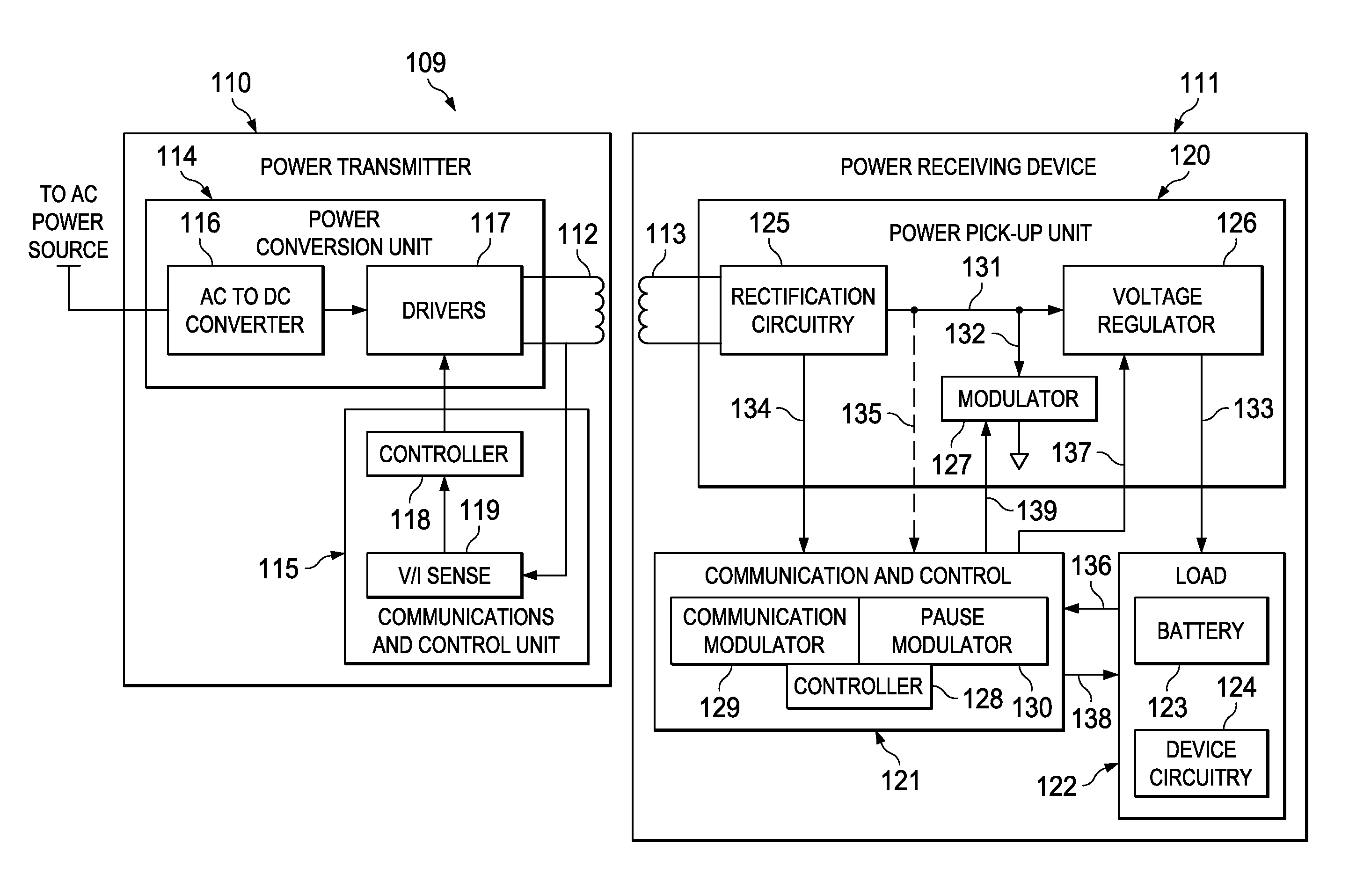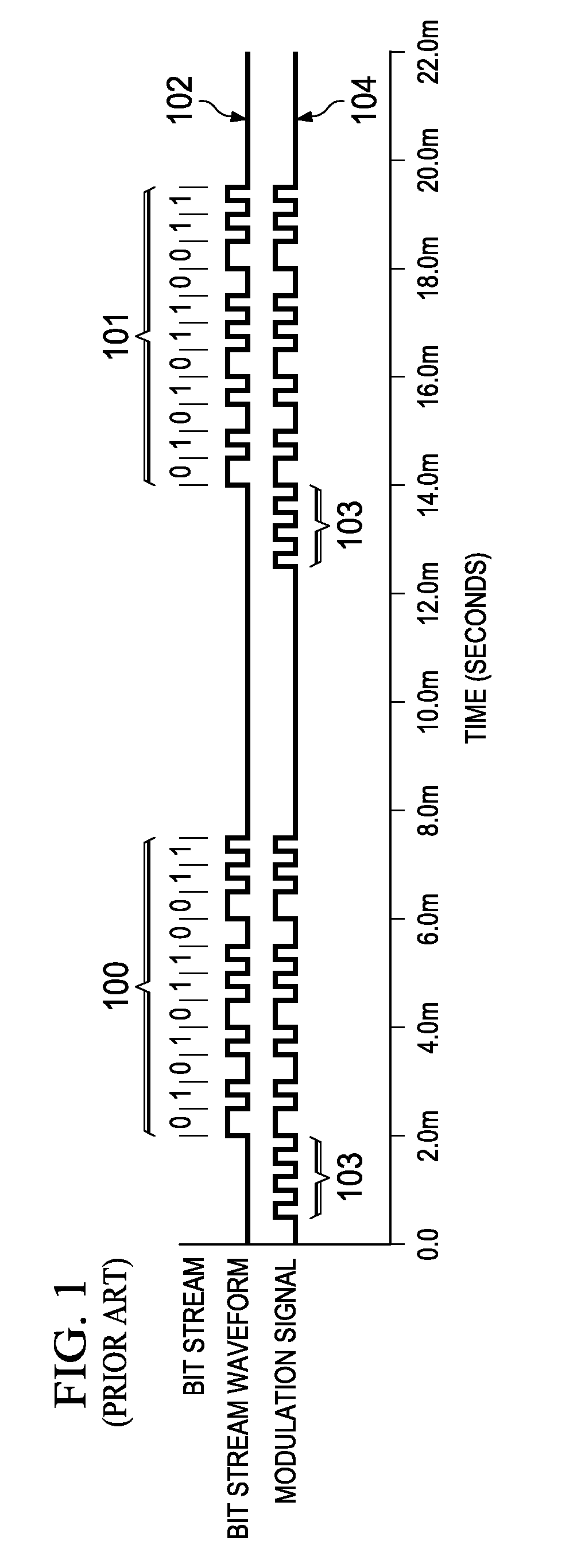Wireless power transmission with improved modulation ripple
a technology of modulation ripple and power transmission, which is applied in the direction of exchanging data chargers, inductances, transportation and packaging, etc., can solve the problem that the power transmitter cannot detect, and achieve the effect of maximizing better optimizing the efficiency of the voltage regulator
- Summary
- Abstract
- Description
- Claims
- Application Information
AI Technical Summary
Benefits of technology
Problems solved by technology
Method used
Image
Examples
Embodiment Construction
[0025]An example wireless power transfer system 109 incorporating an embodiment of the present invention is shown in FIG. 4. The wireless power transfer system 109 generally includes a power transmitter 110 and a power receiving device 111. The power receiving device 111 may be any appropriate electronic device, such as a cell phone, game controller, electric toothbrush, clock, computer, microphone, etc. Electrical power is transferred from a primary inductor coil 112 in the power transmitter 110 to a secondary inductor coil 113 in the power receiving device 111 by means of electromagnetic field coupling. During communication time periods, the power receiving device 111 modulates the electromagnetic field between first and second states in a manner that can be detected by the power transmitter 110 as logic bits in a communication bit stream. As described in more detail below, the power receiving device 111 continues to modulate the electromagnetic field between the same states (or w...
PUM
 Login to View More
Login to View More Abstract
Description
Claims
Application Information
 Login to View More
Login to View More - R&D
- Intellectual Property
- Life Sciences
- Materials
- Tech Scout
- Unparalleled Data Quality
- Higher Quality Content
- 60% Fewer Hallucinations
Browse by: Latest US Patents, China's latest patents, Technical Efficacy Thesaurus, Application Domain, Technology Topic, Popular Technical Reports.
© 2025 PatSnap. All rights reserved.Legal|Privacy policy|Modern Slavery Act Transparency Statement|Sitemap|About US| Contact US: help@patsnap.com



